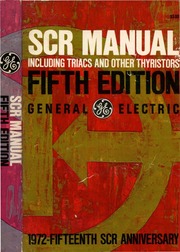Follow along with the video below to see how to install our site as a web app on your home screen.
Note: This feature may not be available in some browsers.
my triac is used to control the motor speed in a washing machine, i have visualized the signal between MT1/2 as you can see in the picture, at what time should i calculate the derivative (the slope), i mean dv/dt is not constant over time as you know !!Where else would you like to measure it? Yes between MT1 / 2. The oscilloscope will calculate the value for you. Or just do simple math wih analogue one. (V2-V1)/(T2-T1)?
You should use an R-C snubber network across the triac.I would like to verify the value dV/dt for my triac
Thank you for the reply,The dV/dt spec of a triac is the rate of change in voltage across MT1 and MT2 that the device will tolerate and NOT trigger. The gate is open for this test.
As such, the waveform in post #3 tells you nothing, as that shows triggered operation.
To test the dV/dt of the device, you need to apply a voltage pulse across MT1 and MT2 that has the specified rise time.
- The source of the pulse must source sufficient voltage and current that, if triggered, the device will stay latched.
- The pulse should stay on long enough to see whether the device triggered or not.
- You will need to test this in both polarities.
The device DV/DT rating is the safe maximum rate of voltage change across the main terminals when the device is NOT being deliberately triggered.
It's a value which may cause unwanted triggering if exceeded.
Think of the device having internal parasitic capacitance from MT2 to gate as a simple example:
If the rate of change of voltage across the power terminals is too high, that capacitance may supply a high enough internal gate current pulse to make the device falsely trigger.
That is a DV/DT problem.
As I've already said, in a basic single phase control circuit with no other parts causing fast, high-energy pulses across the device, it's irrelevant.
Just use a snubber, which is good practice anyway.
All the information you keep asking about is supplied by the device makers in the data sheets. It's there for a reason - so you do not have to derive the parameters and safe working limits for yourself!
we need to verify them.

Thank you... Very helpful !A good reference book -

components :: ge :: 1972 GE SCR Manual 5ed : Free Download, Borrow, and Streaming : Internet Archive
From the bitsavers.org collectio n, a scanned-in computer-related document.components :: ge :: 1972 GE SCR Manual 5edarchive.org
Regards, Dana.

